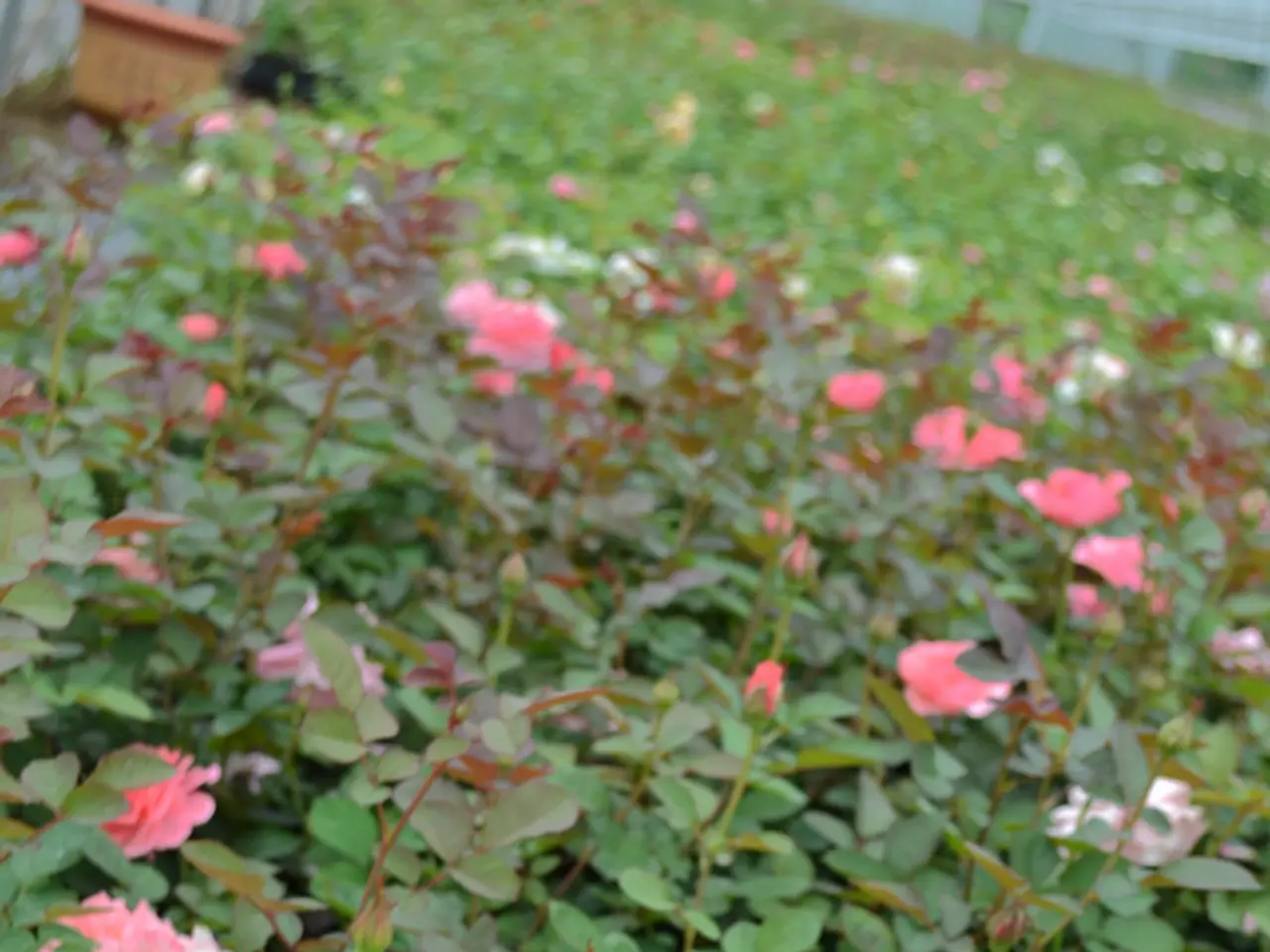Guide on cultivating Thalictrum - achieve vibrant floral draperies and elevate your cottage garden frontiers with stunning blooms
Thalictrum, also known as meadow-rue, is a delightful addition to any garden. Reaching up to 8 feet in height, this perennial makes a stunning statement in the back of a border. Here's a guide to help you care for and enjoy Thalictrum in your garden.
Planting and Maintenance
Thalictrum grows well in various soil types, but prefers moist, well-drained soil. It thrives in partial shade, although it can also grow in full sun, provided it is watered frequently and never allowed to dry out.
In spring, add a layer of organic mulch, such as peat-free mulch, to the base of your Thalictrum plants. This practice can be beneficial for their overall health. Additionally, adding an organic plant food throughout the summer will make your Thalictrum more floriferous.
Flowering and Deadheading
Thalictrum blooms from June to September, producing beautiful, delicate flowers that are a joy to bring indoors. Razor-sharp garden snips are essential for deadheading Thalictrum, a process that will prolong its flowering season. Continue deadheading every week to encourage more blooms.
The flowers of Thalictrum are a magnet for bees, butterflies, and other insects, making it a terrific choice for prairie planting and meadowscaping. After the flowers have faded, the structural seed heads remain, adding interest to your garden all fall.
Cultivation and Propagation
Thalictrum is herbaceous, dying back at the end of summer, leaving bare earth in the winter. From this bare earth, fresh new growth appears in the spring, ensuring that Thalictrum will reappear each year.
While Thalictrum is a joy to grow, propagating it from seed can be trickier than other plants due to the sterile nature of many varieties and the long time it takes to reach flowering size. It is far easier to buy Thalictrum as a plant instead of growing it from seed.
Choosing the Right Thalictrum for Your Garden
Many common varieties of Thalictrum are hardy in USDA Zones 3 through zone 9. The recommended USDA hardiness zones to grow Thalictrum are typically zones 4 through 8.
Thalictrum looks beautiful alongside poppies, campanulas, towering spires of delphiniums, and rose shrubs. Its shape and texture make it ideal for cottage garden borders and central to the cottage style of planting.
In spring, Thalictrum makes a wonderful prelude to its floral element and pairs well with tulips, hyacinths, and other spring-flowering bulbs. With its low-maintenance and fuss-free nature, Thalictrum is a joy to grow in the garden.
Read also:
- Peptide YY (PYY): Exploring its Role in Appetite Suppression, Intestinal Health, and Cognitive Links
- Toddler Health: Rotavirus Signs, Origins, and Potential Complications
- Digestive issues and heart discomfort: Root causes and associated health conditions
- House Infernos: Deadly Hazards Surpassing the Flames








